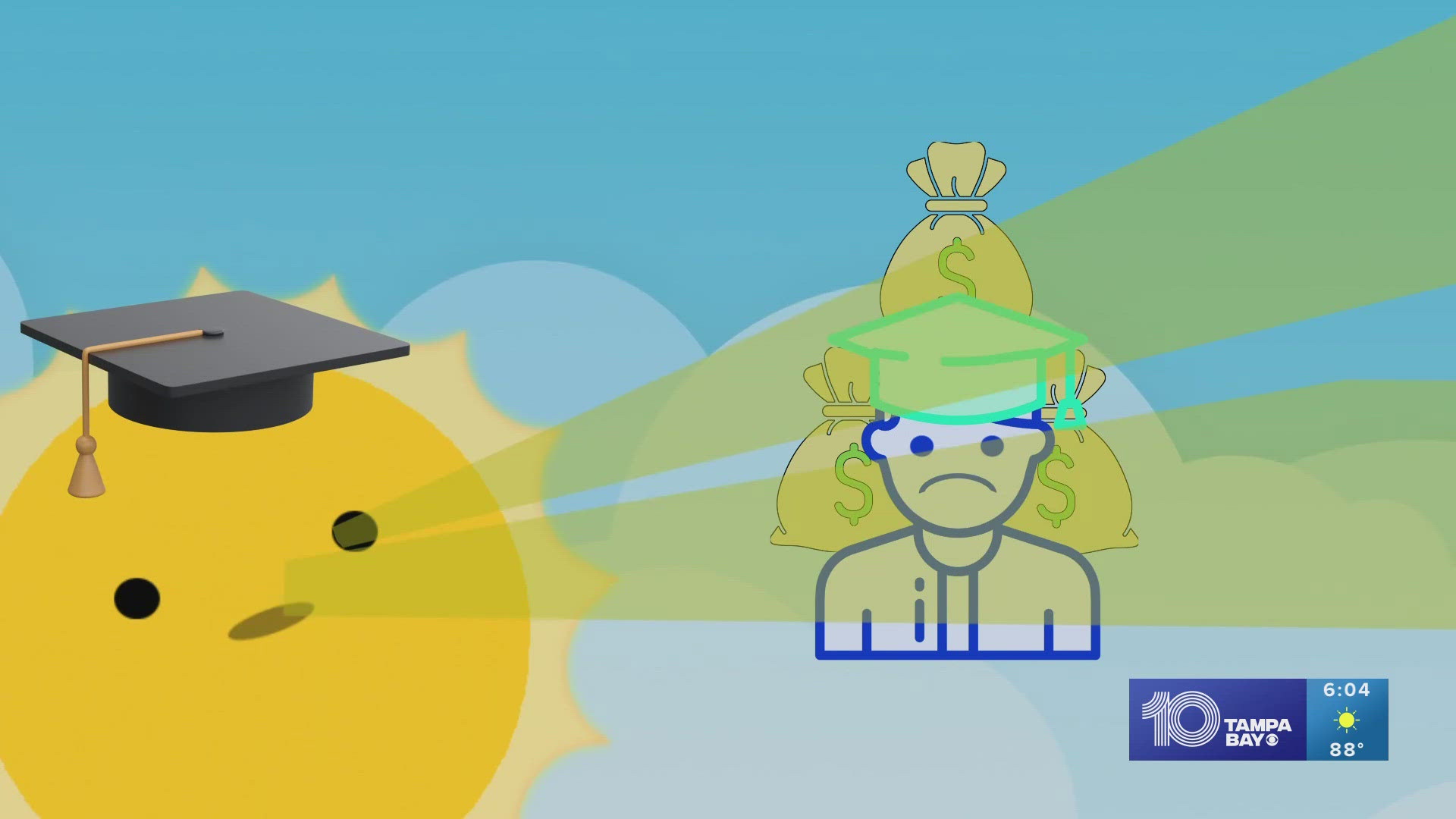ST. PETERSBURG, Fla. — Student loan debt can burden people for decades. In the Sunshine State, the Bright Futures Scholarship Program is supposed to help.
Florida students who achieve certain benchmarks when it comes to their GPA, coursework, college entrance exam scores, and volunteer or work hours can have their in-state tuition partially or fully covered.
However, 10 Investigates found out the future is not equally bright for all students. There’s a persistent racial gap when it comes to who gets those scholarships.
The percentage of Hispanic Bright Futures recipients has tripled since the scholarship program started. Meanwhile, the percentage of Black students getting scholarships has remained stagnant. For nearly three decades, it’s never been more than 7%.

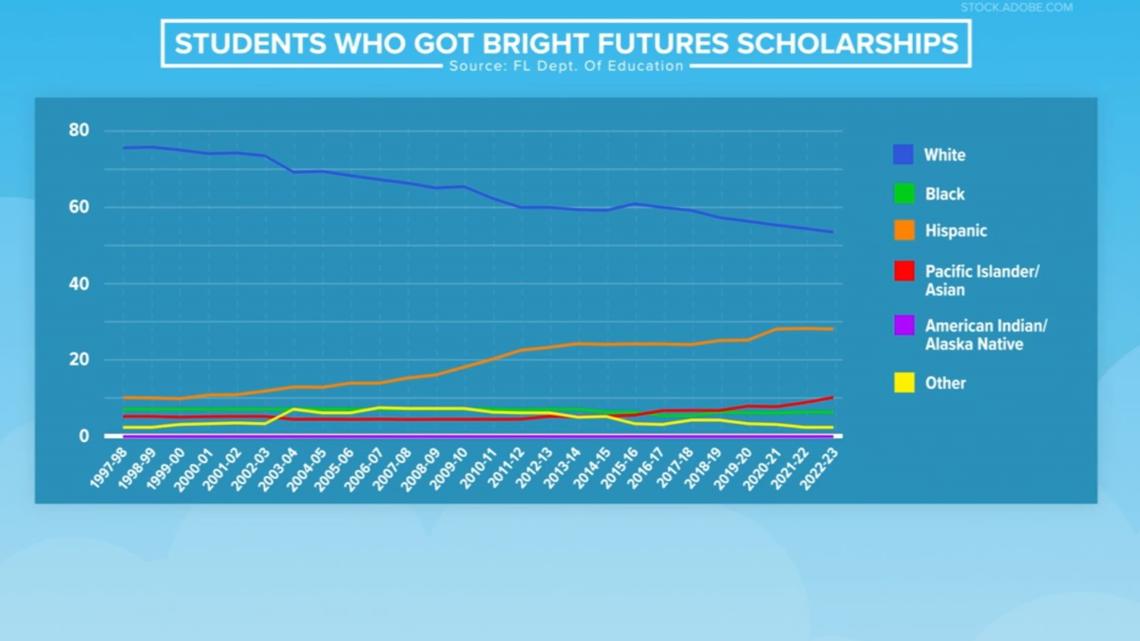
Full ride to an Ivy League school, but not a Florida university
Florida high school graduate Shnayjaah Jeanty was a National Youth Poet Laureate finalist. Now, she's a freshman at Columbia University in New York.
She got a full ride to the Ivy League school but said her SAT score wasn’t high enough to qualify for a Bright Futures scholarship to cover 100% of her tuition at a Florida university.
As she was looking at the Bright Futures Student Handbook, she noticed students in the National Hispanic Recognition Program get their minimum SAT or ACT score requirement waived.

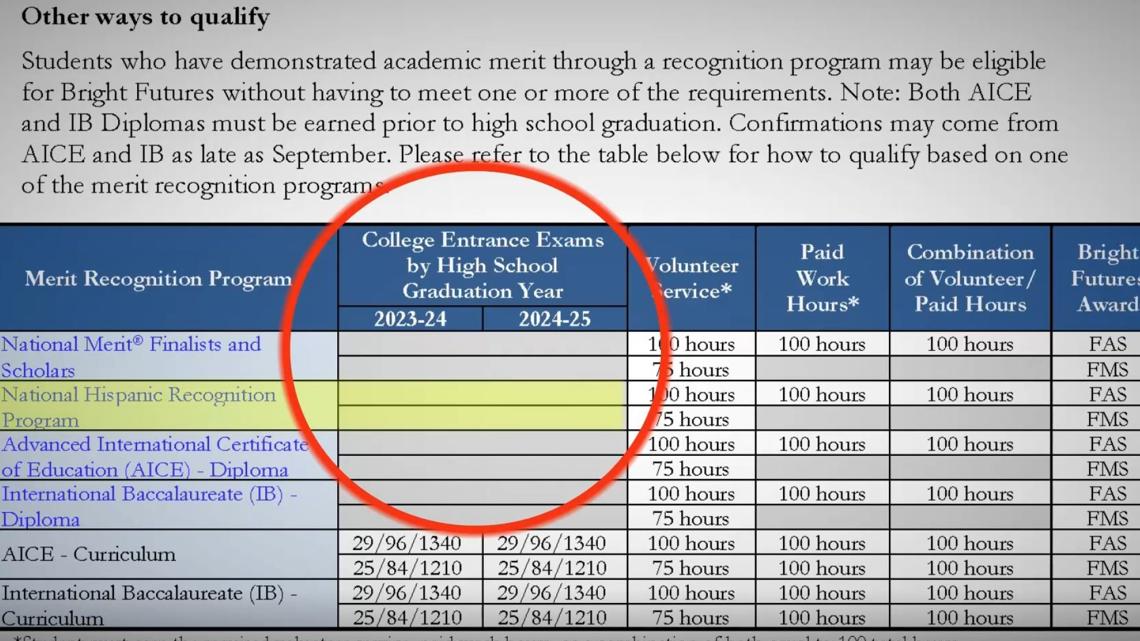
“And I was like, OK, I have the national recognition award for African Americans. Like, it's the same requirements. Maybe they forgot to, you know, list Indigenous and Black students,” Jeanty said.
Nope. Not a mistake.
Out of the five College Board National Recognition Programs, including the National African American Recognition Program, only students in the National Hispanic Recognition Program get their test score requirements waived, thanks to this state law passed in 2000.
“For one group to be recognized, which I fully support, and one group to not be just seemed odd,” Jeanty said.

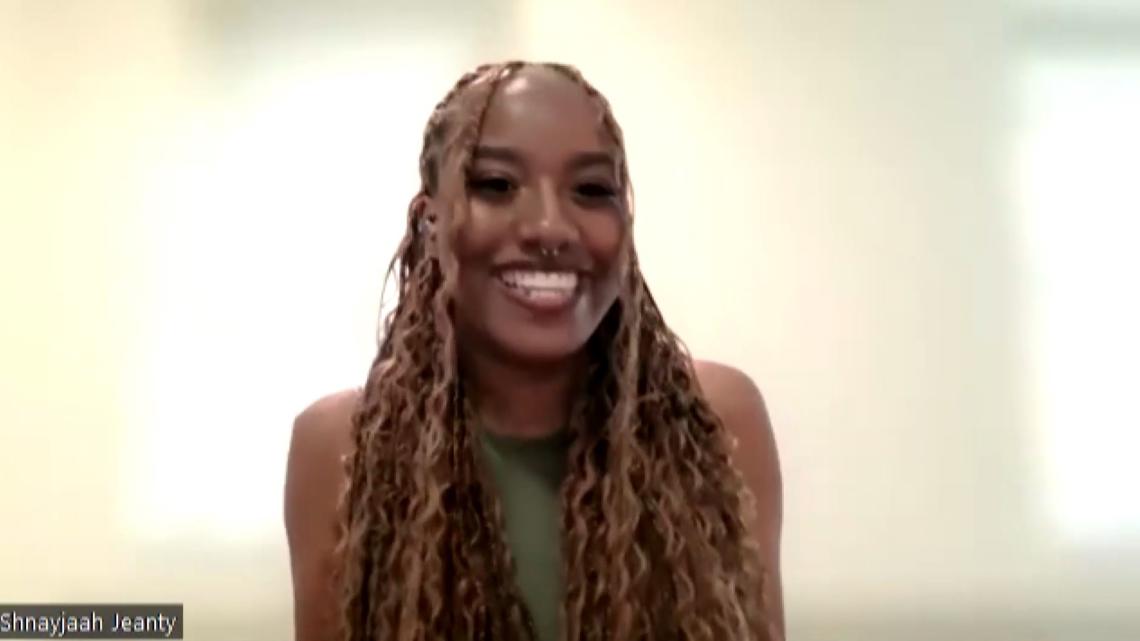
'We’re clearly not doing something right’'
Florida legislators have been raising minimum test scores to qualify for Bright Futures since the 2012-2013 school year to sustain the program financially.
Fewer students who qualify equals fewer scholarships to pay for.
10 Investigates combined data from the Florida Department of Education, Florida College Access Network and the Florida Department of State. The percentage of high school students who got Bright Futures scholarships dropped as minimum test score requirements rose.

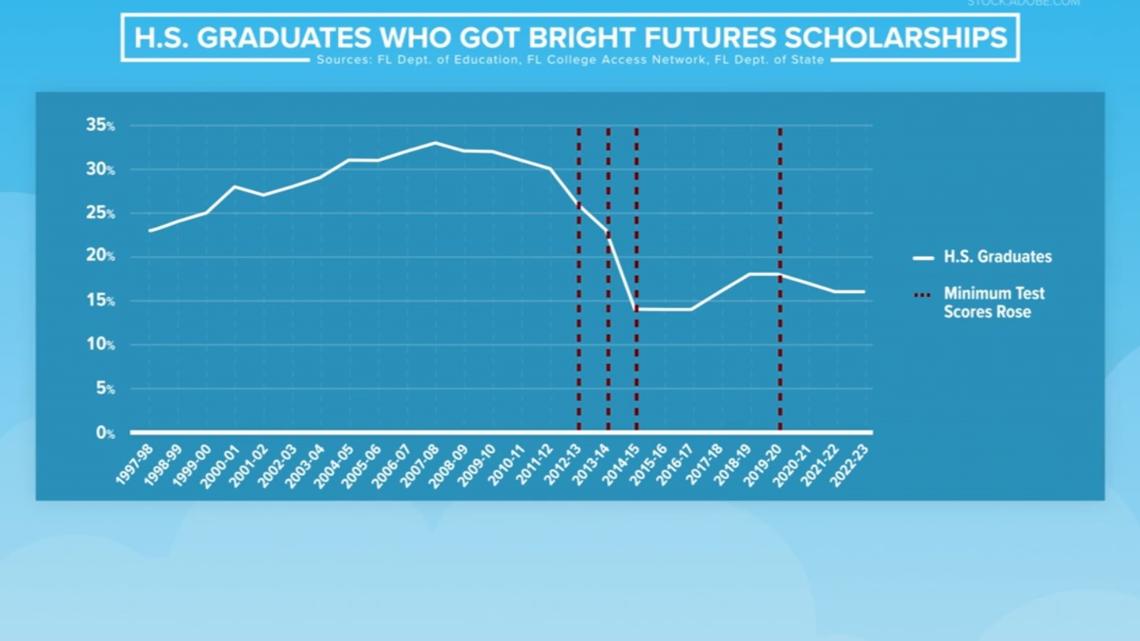
Data shows Black students and students whose families have lower incomes score lower on college entrance exams.
“If we're going to create a path outside of standardized test scores, let's make sure all students have that opportunity to demonstrate merit,” said Braulio Colón, Executive Director of the Florida College Access Network, an organization dedicated to increasing the number of Floridians who earn a degree.
Colón was the first in his family to go to college.
“Since 1997, the percentage of Bright Futures recipients who identify as Black has not changed. We're clearly not doing something right,” said Colón. “Let's acknowledge that that gap exists. And that it’s been persistent. And let's address it,” he said.
10 Investigates created our own database showing who’s getting Bright Futures scholarships and how much that program has cost over the years.
Not just test scores
Sarasota Middle School Counselor Dr. Carmen Larson said it’s not just about test scores; another big factor contributing to this racial gap is Florida’s shortage of school counselors.
“It just really goes back to equity and access,” Larson said.
Larson is the 2024 Florida School Counselor of the Year, past Chair of the Florida School Counselor Association’s Governing Board and a counselor educator at universities across the state.
She said she’s responsible for about 417 students at Sarasota Middle School.
Florida doesn’t have a law requiring schools to have counselors, and the state's counselors are overburdened. The average school counselor in Florida works with 423 students.
That’s way above the American School Counselor Association’s recommended ratio of 250 to 1.
Larson said school counselors also get pulled away to fill in staffing gaps, such as substitute teaching, lunch duty and bus duty.
“A lot of times, the African American population will seek out school counselors as the resource about postsecondary education options, more so than their non-Black counterparts. So, when that counselor is not there, it’s really hard to find somebody that has the information and the resources that they need,” she said.

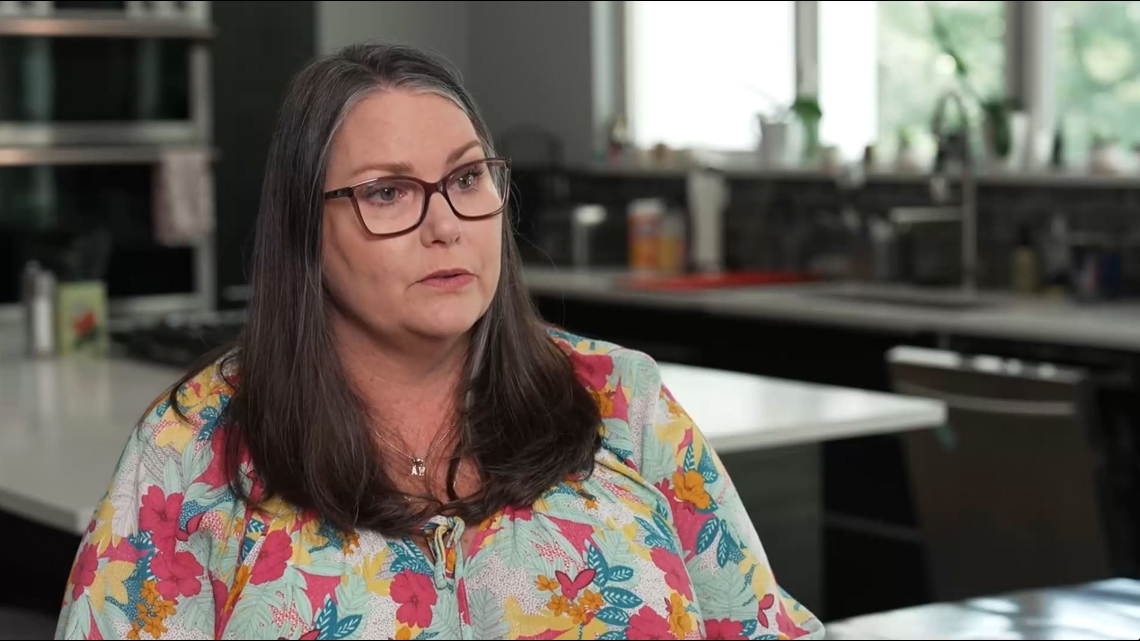
When we started asking the Florida Department of Education about this gap in March, Press Secretary Nathalia Medina told us, “Over the past five years, approximately 50,000 eligible students did not apply to receive Bright Futures…”
10 Investigates asked for a racial breakdown of those students.
The agency stopped responding to us two months ago.
Commissioner of Education Manny Diaz hasn’t returned our calls, but he has been busy.
He and Florida Lottery Secretary John Davis have visited four high schools “to raise awareness” about Bright Futures since we started asking questions.
Most of the funding for Bright Futures comes from the Florida Lottery.
Calling for change
Jeanty said she wants more students to have access to higher education so their futures can look bright, too.
She created a petition asking lawmakers to expand the college entrance exam score waiver to all minority groups who’ve qualified for National Recognition Programs.
“These things are in place that have systemically just been there against us for years. And the fact that it's preventing us from, you know, achieving our dreams, or being at our dream school, and doing the things that we want to do, and need to do, and deserve to do is very disheartening,” Jeanty said.
As students head to their high school graduations this month, the bar has been raised again. The minimum test scores required to qualify for Bright Futures this year are the highest they’ve ever been.

